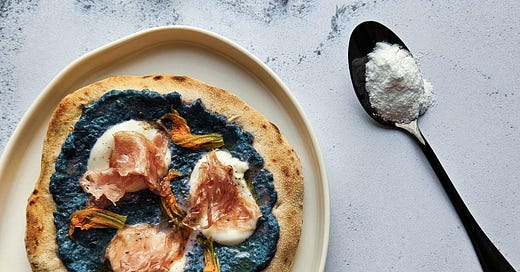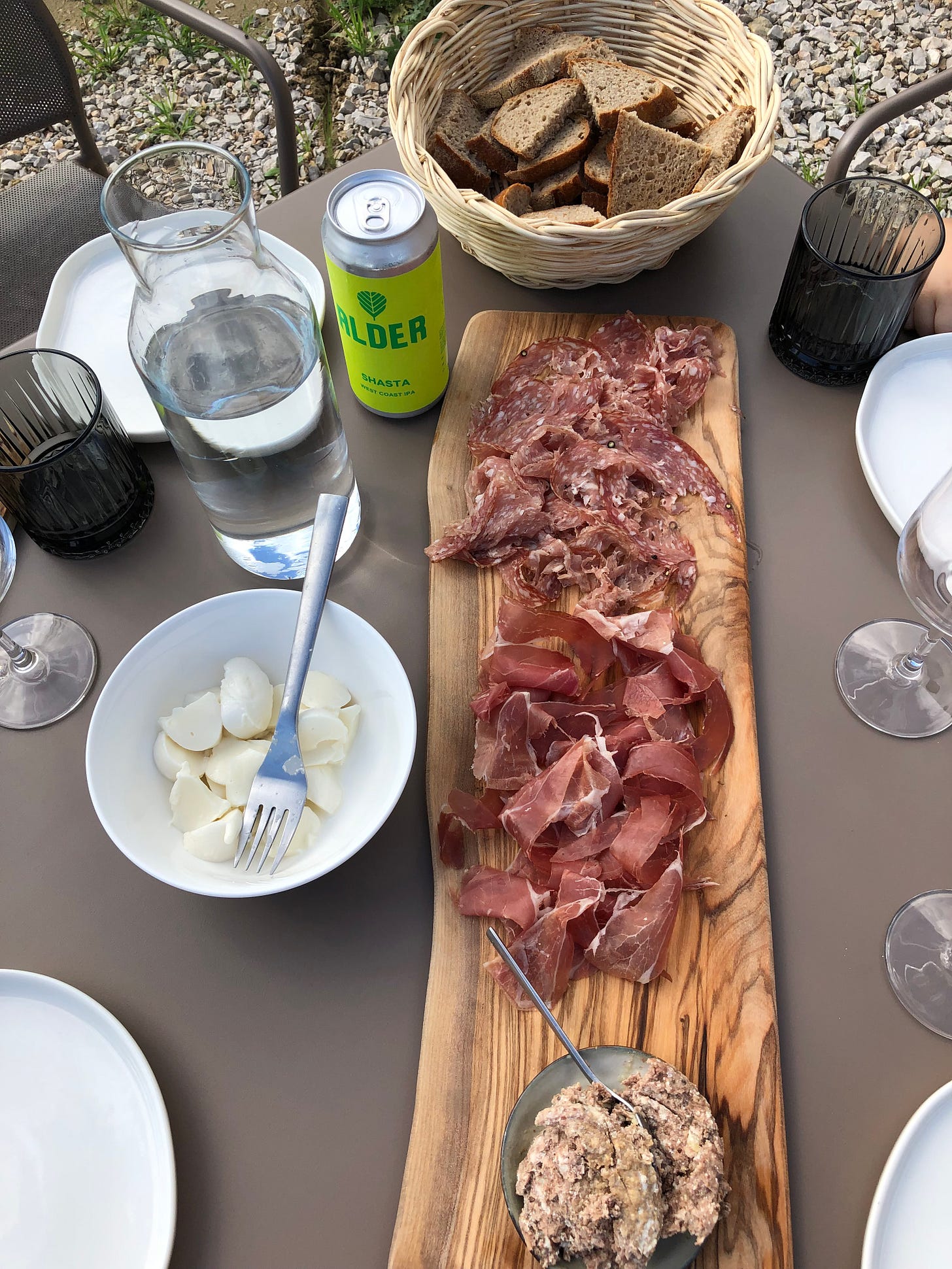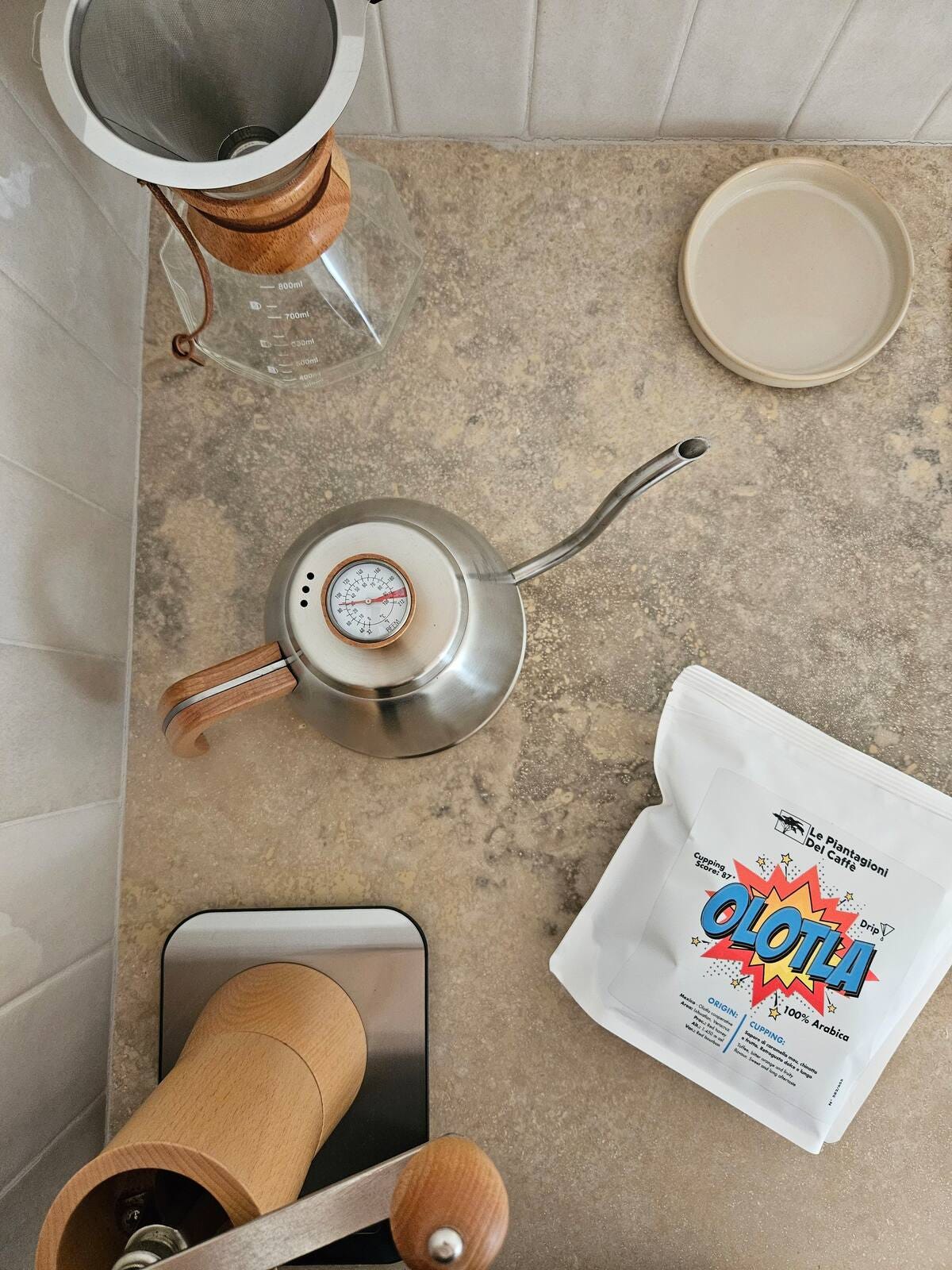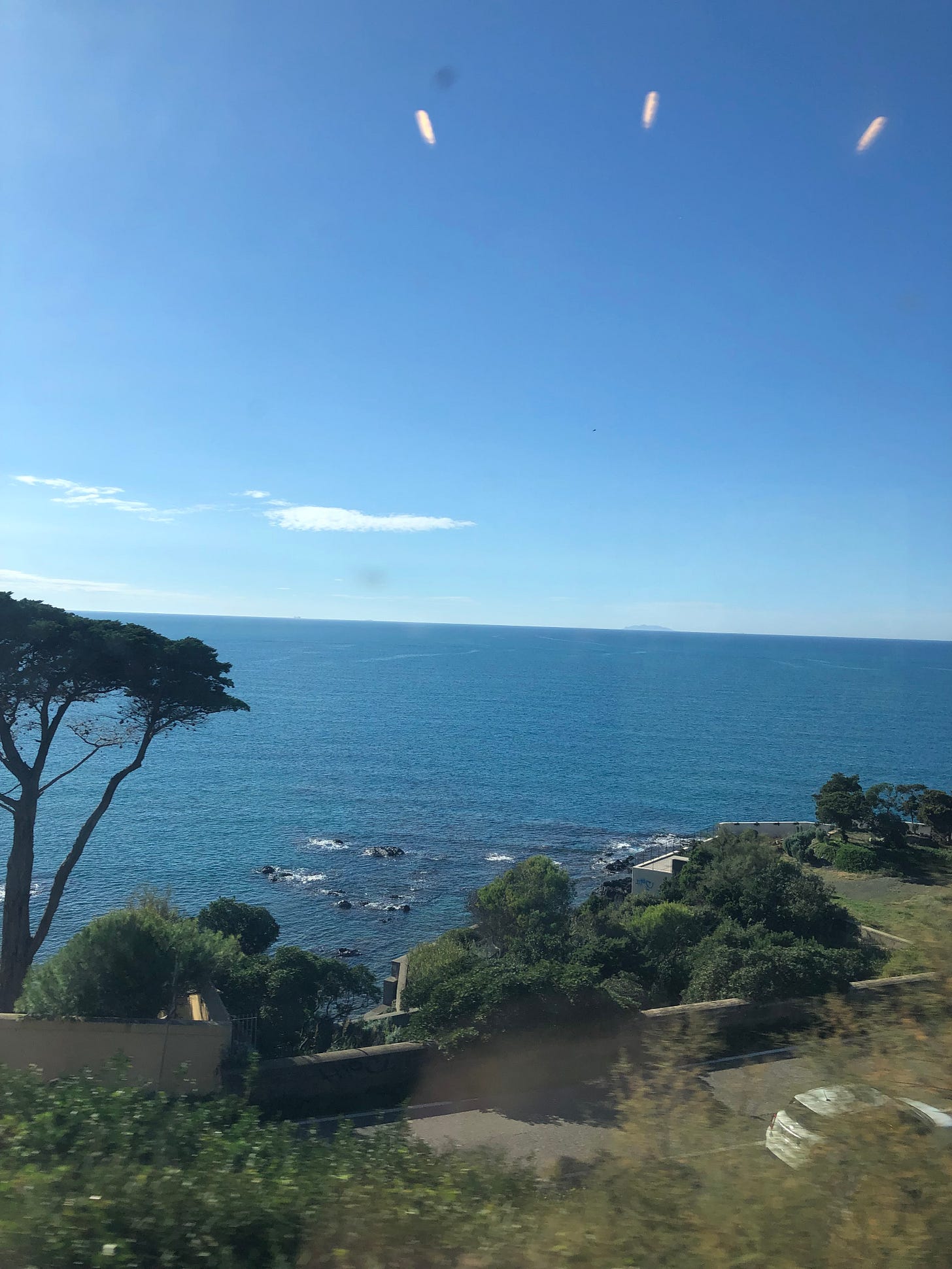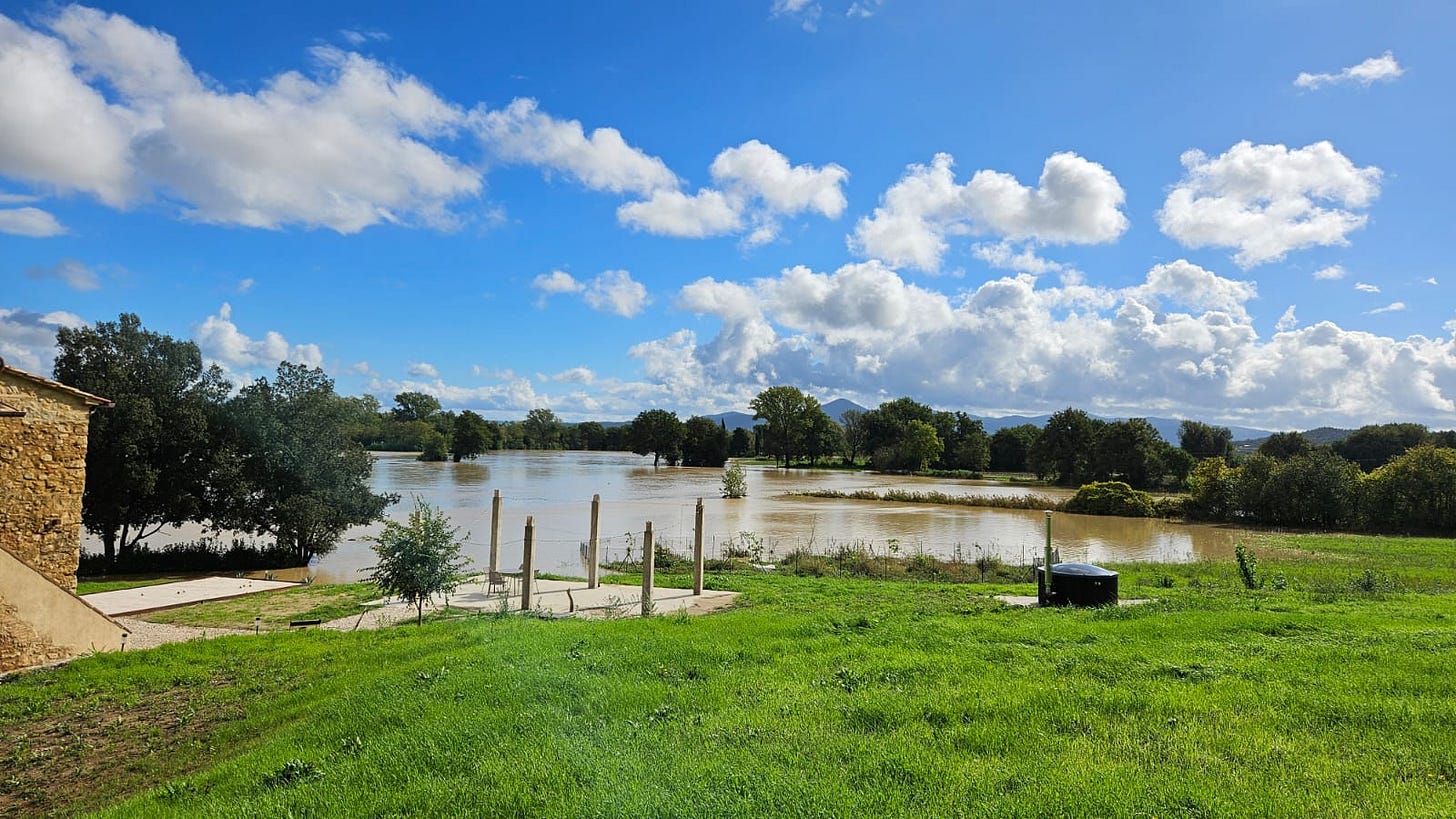I arrived in Montescudaio two days after what was tagged ‘the storm of the century.' In mid-October a mountain of water rolled through the hills at a rapid rate, flooding their small valley essentially within hours. The road to the farm was muddy and hazardous, causing Emeline and her partner Jarno to close the restaurant for the weekend. “This was completely underwater two days ago” Emeline told me as we stood in the raised garden beds, where the vegetables used for the menu are grown. “It was incredible, when the water receded, the vegetables were clean and ready to use, the water was not muddy or full of soot, it must have come and gone so fast.”
There is something special about rewriting the narrative of what agrotourism is - rustic is beautiful, but so are mindfully designed spaces. Kaikna Podere Evolutivo is inspired by tradition, not tied down by it.
We connected on Instagram of all places, although that seems more and more common these days. Emeline’s daily stories posted to Kaikna’s page documenting daily life/harsh realities of building a farm, restaurant, and albergo - all while raising her three year old daughter - resonated with me and eventually inspired me to make the trip to see and feel the farm for myself.
“Why pizza?” I ask as we sit outside, basking in the last bit of sunshine(y) day before winter sets in. We enjoyed local cheeses, salumi and a rustic, whole wheat bread Emeline made from the wheat she grew herself. We split a couple cans of 1craft beer brewed by a friend of Jarno’s near Milan. That friend happened to the be one of Italy’s most promising craft brewers. Their beers are a staple in my fridge. It was refereshing to dine with someone who had the same ethos and principles about food as I did.
Pizza is considered a traditional meal that is not left to be creatively altered, however the food program at this pizza farm and restaurant is designed with a more sustainable philosophy in mind; showcasing ingridients that go against the grain of the current food system.
You see, the current food system in Italy is divided into two different camps.
The general public lives by the pressumed notion that food is just better in Italy, but the reality is much more complex. Tomatoes are still grown in mass quantities to keep up with demand and are heavily reliant on migrant labor. Wheat and other grains grown to make pasta and pizza, are often grown in other countries and then imported.
Podere Kaikna Evolutivo was born in an effort to do just the opposite; with an emphasis on creating and supporting local food systems, practicing artisan food production and designing a space-inside and out-that is both beautiful, and inherently sustainable.

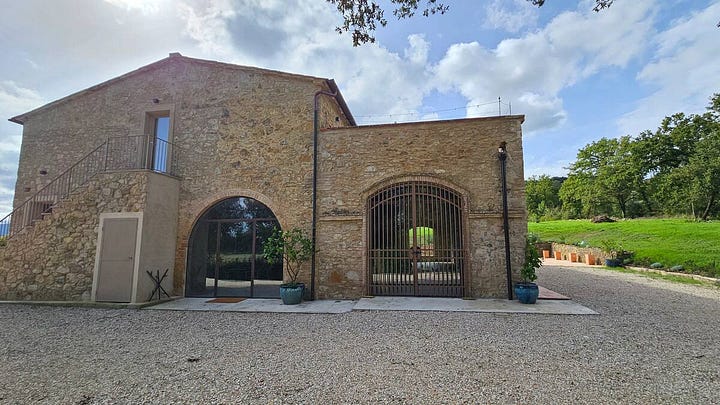
Significato di Kaikna? Podere Evolutivo?
The inspiration comes from the combination of the Estruscan name for the river Cecina (the same river that overflowed days before my arrival) and the structure that was built to cross that river each year for a local cattle festival (also in the shape of a K).
Podere Evolutivo or evolutionary farmstead, roughly translated in English, has its own double meaning.
Not only are Emeline and her partner Jarno working to evolve the food system in their village of Montescudaio, but allowing themselves to evolve with time; thanks to resources, new ideas and lessons learned during the process of building this pizza farm.
Emeline has been posting on Kaikna’s Instagram page for over two years, and there is so much information that I highly recommend you check out.
From field to plate
The new farm to table. Directly in front of the ristorante, sits the wheat fields. Grani grown here will be milled into flour for le pizze. Read about their Andriolo wheat below!
If it wasn’t obvious, Emeline uses sourdough and depends on a slow rise. They also practice an omakase style menu format. Guests are invited to ‘leave it up to the chef’ and keep an open mind. This allows Emeline to try a multide of flavor combinations outside of the traditional margherita, and utilize seasonal produce that the orto provides. The vegetable garden is within meters of the restaurant and the kitchen.
The food portions are also smaller than the traditional personal pizza. This way guests can have variety and eat while the food is still warm! (Anyone that has sat outside during the fall months, can appreciate this. Cutting cold dough with a dull pizzeria knife is a contact sport.)
The longer I live in Italy, the more I realize how touchy the subject of tap water is. While it is common in restaurants to offer bottled still or sparkling water, the reality is transporting glass, whether full or empty, to and from the farm, is a logistical nightmare. Or worse, having plastic bottles. At Kaikna, they installed a filtration system to keep it zero kilometer.
If grain, water, and vegetables were not enough to persuade you, they also source 2coffee beans from local roaster based in Livorno. Coffee is one of those ingridients that is so intrisic to Italian food culture, yet massive coffee companies get away with irresponsible sourcing from abroad.
The little details are everywhere and I could go on giving a back story to every special thing that fills their space. I wanted to share their story, especially with the community that I have curated over the last two years, because I know my subscribers are sustainability-minded and will appreciate all of the care and attention that goes into creating something like this.
Like I mentioned, I have been following Emeline on Instagram for well over a year, and her Instagram stories tell the true tale of of what life is like as a food strategy consultant turned farmer. She is orginally from France, attended graduate school in Milan and has an incredible vision for food, design and sustainability that I wish I could emulate. This paragraph does not do her background and expertise justice. As if she wasn’t already awesome, she also a great mother to the sweetest little girl. (And I have nannied for quite a few Italian children so you can trust my judgement.) As we walked around the farm, Emeline, held her daughter Siena in her arms, the entire time. Until Siena allowed me to carry and entertain her for a bit. I think there is something about my height and long hair that kids are just comforted by.
Yes, you can eat at the restaurant AND stay the night!
The restaurant, larger dining room, future wine cellar, AND one of the rooms (all rooms are available on Airbnb) are situated on the ground floor. Two larger apartments are on the top floor. The wine cellar won’t be utilized for a few more years, and right now it is storing their grain (a.k.a. future flour for pizza dough). I can picture the long days on this “drive way” that will be the setting for harvests to come. French varietials such as Marsanne, Roussanne, Clairette and Syrah are planted in the vineyard. An homage to Emeline’s French origins. The vineyards are just a short walk away, continuing with the zero kilometer trend.
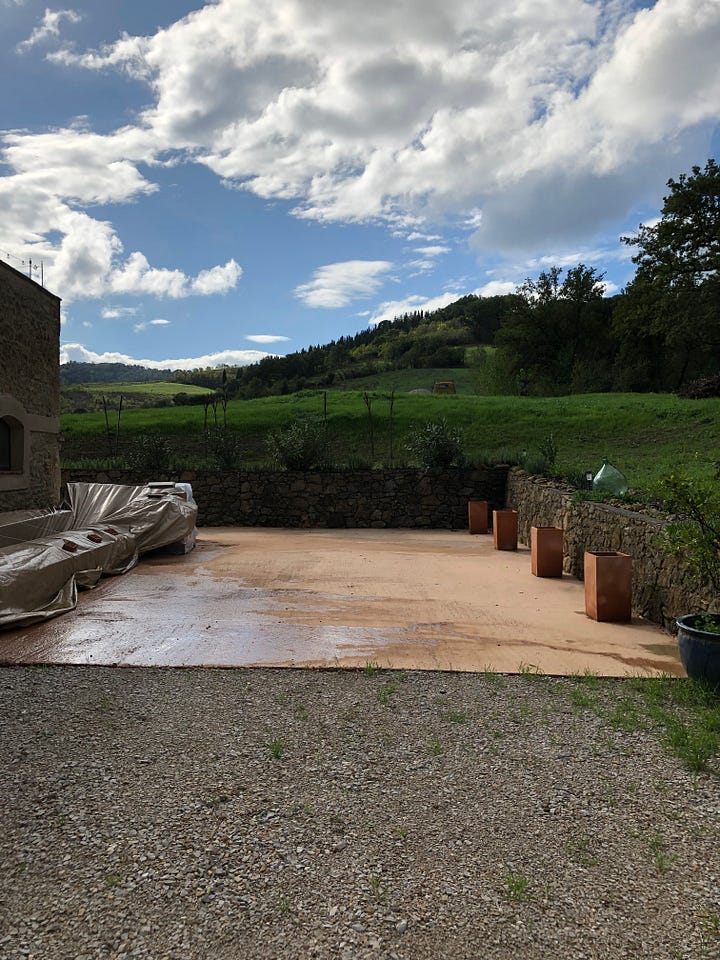
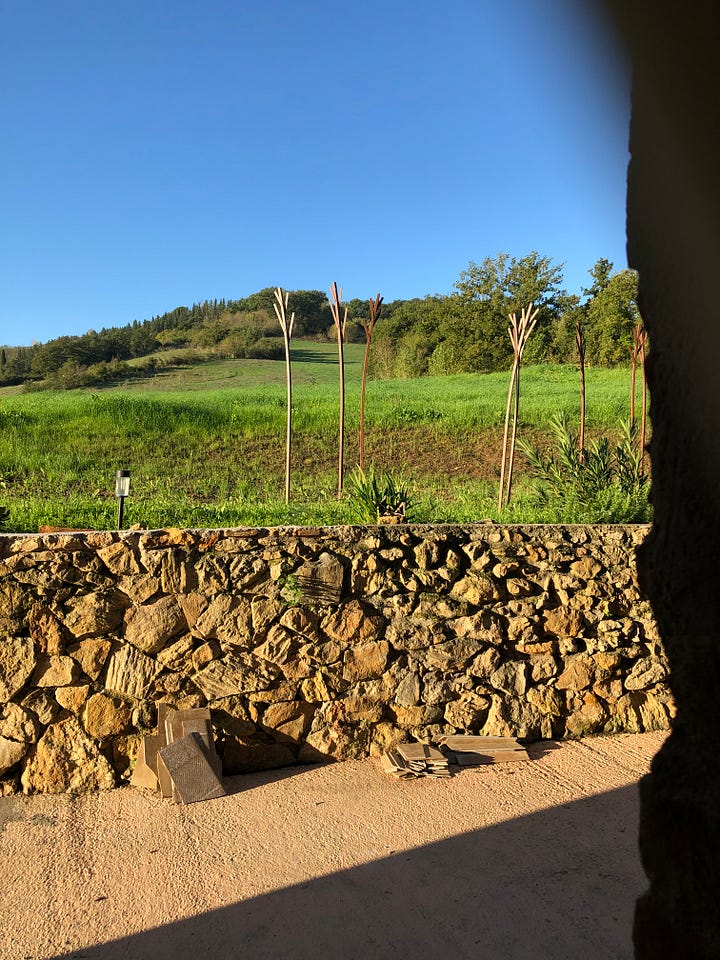
For my first two years in Italy, I wanted learn a bit of THE HISTORY before I sought out THE NEW. I was able to visit homes in Tuscany that were built in the 1600s, and wineries that have been around for well over four generations. I have visited traditional cheese farms, and even taken a haunted tour of an abandoned village in Abruzzo. Now, it’s amazing to see something built from the ground up. There is something special about rewriting the narrative of what agroturism is - rustic is beautiful, but so are mindfully designed spaces. Kaikna is inspired by tradition, not tied down by it. Unlike some Italians believe, there is room for innovation.
Please travel responsibly
I have been hesitating posting my about my experience at Kaikna because unfortunately, we have no control over who can view the information. It’s a double edge-sword when it comes to promoting the natural side of Italy and the unique places I have visited; especially a space like this. It takes one irresponsible guest to taint the experience for others. In fact, Emeline had a WWOOFer (volunteer) arrive the day I was leaving, and the plan was to have them stay for a week and help out with small tasks in the farm. It was a test run to see if the volunteer farm worker program would be benefitical to them. The volunteer ended up disrespecting the space, (a beautiful brand new room), and was inconsiderate about the meals prepared. Emeline was disappointed by the experience, and is hestitant to organize another volunteer, even though the extra hands are always needed. I actually started to draft a reel on Instagram to help promote Kaikna and get the word out, but I fear the wrong people will see the video. Tourists (from all countries, not just Americans) have been known for buying copious amounts of booze, food and goods from the grocery store and leaving behind tons of trash. This is a small farm, Emeline and Jarno are the trash collectors. There is a threat of guests leaving the air conditioning for extended periods of time instead of opening a window. It’s the little things that travelers coming to Italy for the first or even the fifth time don’t think about. But then again, I want this place to succeed. I believe in what they are doing, what they are building and I hope that others will see the beauty in it too.
Before my train back to Rome, we went around Montescudaio and ran some errands for the restaurant. Emeline gave me the VIP tour of the region and told me about it’s quirky history. Like the fact that there is a small village called La California in the middle of Livorno; the muddled history can be read here. We picked up a case of wine from Caiarosso and did some viral marketing with their team. Like I said, everyone loves pizza, who wouldn’t want to come visit a pizza farm?
Postscript
If you like what you read, PLEASE subscribe. Knowing that people are electively signing up to read my writing is the biggest compliment and encourages me to write more. I don’t plan on putting up a pay-wall at the moment, but anything helps as far as pledges go! A few generous readers have made an annual pledge and that support means the world to me. It helps me value my writing and my time as important, instead of feeling trapped behind a bar. It also helps for pay for train rides and opportunities to seek out places like this to eventually share with you all.
Thank you for reading,
Tana
Alder Beer Co. in Seregno, Italy

